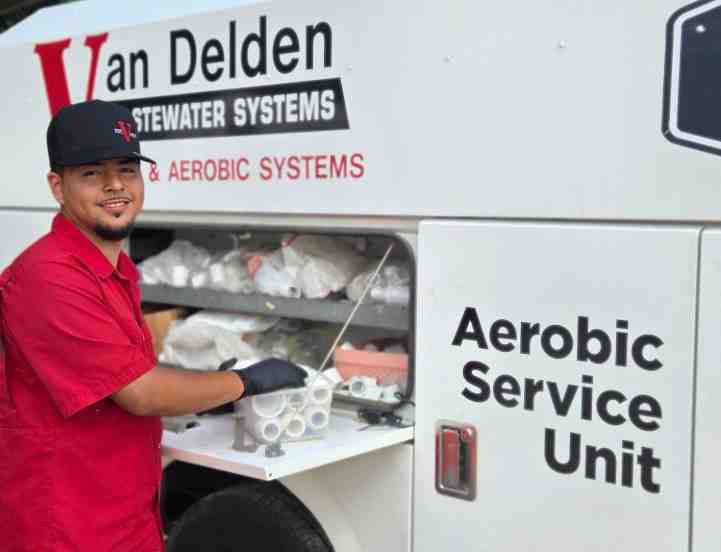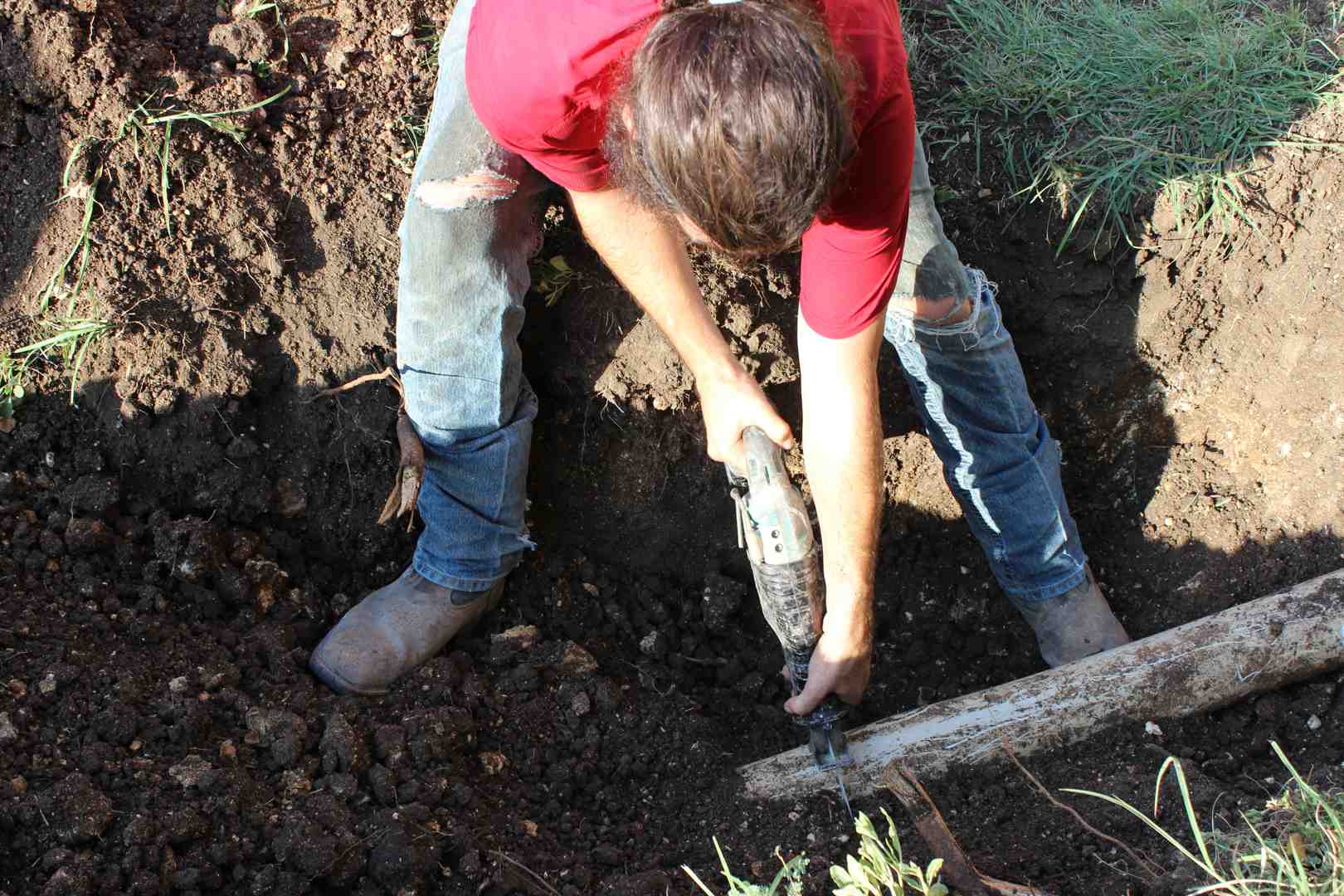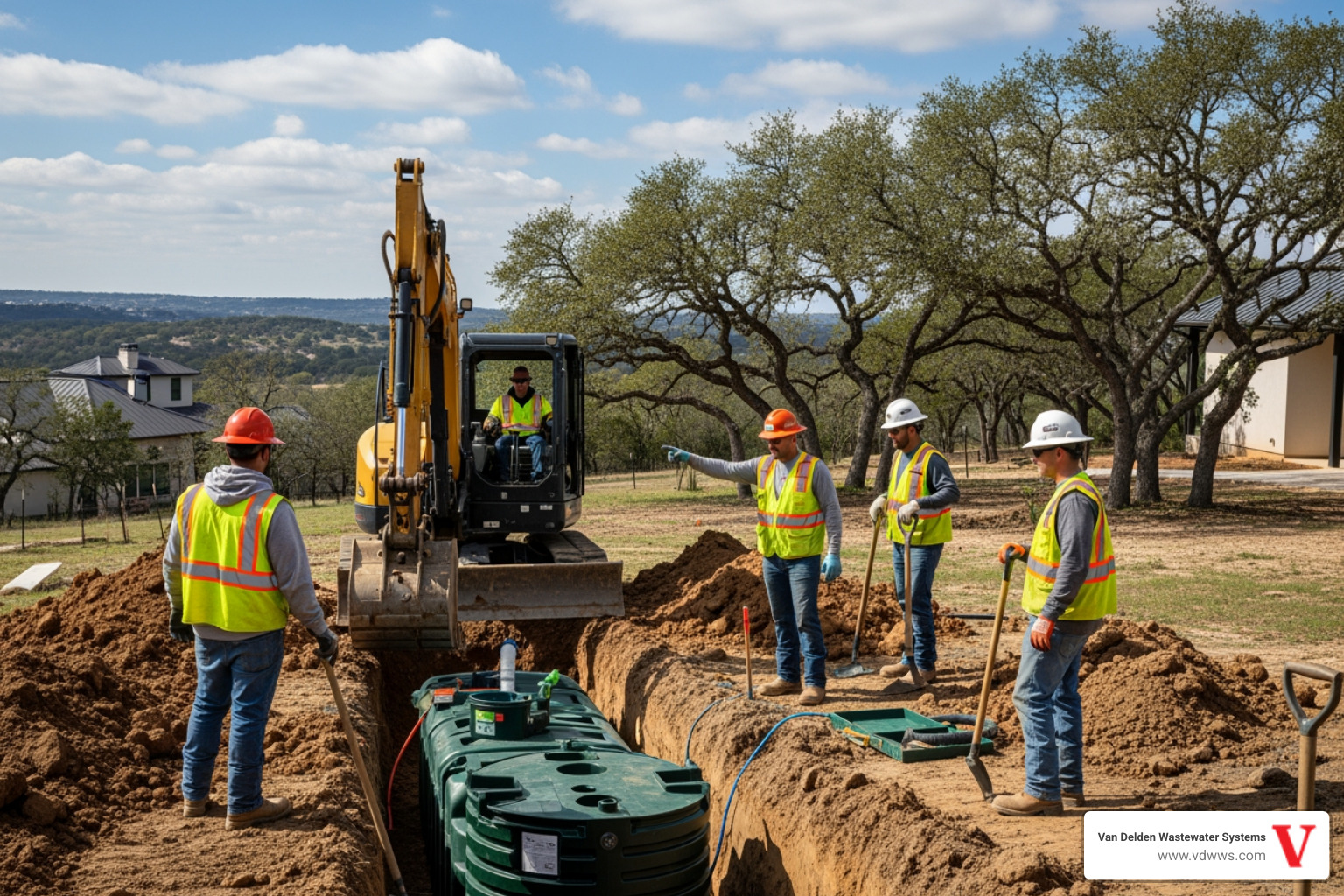When it comes to maintaining a septic system in San Antonio, most homeowners focus on the tank itself. But what goes on after waste leaves the tank is just as important. Drainfields carry the load of dispersing treated wastewater safely into the soil. If the ground isn’t shaped and sloped correctly, that drainage process can fail, leading to tank overload, soggy areas in the yard, or even system breakdown. During San Antonio’s dry summers, uneven grading or erosion can creep in slowly, and most people won’t notice until big problems show up.
Managing the slope and grade of a drainfield isn’t about aesthetics or landscaping. It’s about protecting your home’s septic performance. If the ground becomes uneven or poorly drained, wastewater may pool instead of filtering properly. That slower filtering can back up into the tank or even cause surface discharge, neither of which you want to deal with in 100-degree heat. Setting up proper drainage and keeping it consistent during each season makes all the difference in keeping your system stable and effective long-term.
Understanding Drainfield Slopes And Grades
Your drainfield is a network of pipes buried in soil, designed to release and filter wastewater into the ground. To do its job right, the area needs a steady, downward slope with compacted soil that allows water to move without pooling. If the ground is too flat or sunken in spots, water sits. If it’s too steep, the water may rush away before it gets filtered.
Here’s what matters when it comes to slope and grade management:
- Slope directs how water drains through the collector pipes and into the soil. Gradual downward angles help wastewater spread evenly.
- Grade refers to how level or uneven the surface is. Even a small dip can hold water, which encourages clogs and bad smells beneath the surface.
- Changes in weather, rainfall, foot traffic, or time can reshape your yard. Without regular checks, the drainfield can start to collect water instead of dispersing it.
Poor slope and grade can damage your septic system from the outside in. Over time, extra moisture can harden layers of sludge and reduce effective treatment. That means your tank or yard starts to smell, saturate, or slow down. In some homes around San Antonio, uneven drainfield grading led to wet patches and plant overgrowth, pointing right to drainage trouble.
Managing slope may seem minor, but it has a direct impact on safety and performance. Whether you’re dealing with a new installation or maintaining an old system, paying attention to the natural lay of your yard can make routine drainfield cleaning far more effective over the years.
Common Issues With Drainfield Slopes In San Antonio
San Antonio’s soil makes a difference in how well your drainfield drains. Dry seasons, clay-heavy soil, or too much shade in certain spots all create challenges for even discharge. While you might assume water just flows downhill, your drainfield needs a careful balance. Too much slope, or too little, both cause problems.
Here are some of the most common drainfield slope issues we find throughout San Antonio:
1. Localized Erosion – Areas of loose ground or runoff can wash away soil around pipes, causing dips or exposed drain lines.
2. Soil Compression – Outdoor activities like landscaping or placing heavy items near the field can flatten certain areas, making the grade uneven.
3. Improper Initial Installation – Some older systems were installed without proper grading calculations, increasing the chance of imbalance as the ground shifts.
4. Water Accumulation – Flat or sunken sections can collect wastewater. This not only causes odor but can lead to plant growth or mosquito activity.
5. Shifting Due to Rainfall – San Antonio’s rainstorms can move topsoil, change water flow paths, or soften compacted areas in a matter of weeks.
Fixing these issues gets more difficult the longer they go unchecked. For example, one homeowner near the north side of San Antonio noticed that after every season of heavy rain, the low end of his yard stayed muddy—right over the drainfield. What started as a small slope issue turned into an odor problem and poor septic tank flow. That’s the domino effect uneven grading can cause, and it’s much easier to prevent than to fix.
Addressing slope issues protects both your septic tank and the ground it drains into. If your yard holds water longer than it should, or if parts of your lawn look different than the rest, it might be time to have the slope and grade checked by our technicians. Regular checks during dry and wet months help catch changes before they become big problems.
Correcting Improper Drainfield Slope And Grade
Fixing a slope problem in a drainfield isn’t just about filling holes or grading the soil. It starts with understanding why the area became uneven in the first place. Erosion, soil settling, or past construction work can all change how wastewater moves through a drainfield. In San Antonio, yards often have a mix of clay-rich soil and rock pockets that shift with heavy rainfall and hot, dry summers. That behavior changes the way the drainfield operates and might need adjustments to keep it working efficiently.
Our technicians begin by checking surface level differences and drainage direction across the drainfield area. Often, this involves walking the site after recent rain or using simple tools to find any low points or irregularities in how the ground settles. If water gathers in certain spots or the field feels too soft underfoot, it usually means the slope needs adjustment.
Once the problem is clearly identified, the next step might include:
- Regrading the soil to redirect water flow and create a uniform, downward path.
- Adding fill dirt to sunken areas or low points for even ground.
- Moving drains or adjusting outlet pipes to match the natural slope.
- Applying compacted soil or gravel to prevent future settling or erosion.
- Installing drainage channels to move water away from the field when needed.
Trying to adjust these elements without training can create more issues. Strong water flow can wash out soil, while poor leveling may just move the problem to another part of the yard. That’s why it’s best to trust our professionals for this work. With the right equipment and experience in San Antonio conditions, they know how to balance old systems with modern grading techniques to restore proper wastewater flow.
Preventative Measures For Maintaining Proper Drainfield Grading
Once a drainfield has been graded correctly, keeping it that way is key to avoiding backups or odor problems. It doesn’t take much for shifting soil or landscaping work to undo progress. A few simple habits can help prevent small issues from growing into expensive repairs.
Here are five practical ways to maintain proper grading over the long run:
1. Monitor Water Flow – Take time after rainfall to see where water settles. If puddles form in the drainfield zone, that’s a red flag that slope adjustments may be needed.
2. Avoid Heavy Loads – Don’t park vehicles, place sheds, or stack wood over drainfield lines. The weight can compact the soil and damage the system.
3. Keep Soil Healthy – Aerate or lightly till the area if necessary, without disturbing the pipes. Healthy soil absorbs and filters water more evenly.
4. Watch for Erosion – Sloped areas can wash out during heavy rain. Ground cover or low-maintenance grass can protect from surface runoff.
5. Schedule Regular Checks – A technician can identify early signs of grading problems, like unusual plant growth or signs of water pooling.
Seasonal weather shifts in San Antonio, especially during late summer and early fall, can speed up soil movement. Keeping an eye on how your yard changes every few months goes a long way toward protecting your septic investment. During extremely dry stretches, cracked soil can even start to pull away near the drainfield, which might mess with even grading patterns. Staying ahead of these signs helps extend the system’s effective lifespan.
Ensuring Optimal Septic System Health
Drainfield grading often goes unnoticed until it causes disruption. By then, you might be dealing with soggy grass, slow drains, or odd smells around the yard. But by managing slopes consistently and checking their condition throughout the year, problems can be avoided before they grow.
In San Antonio, the combination of dry heat, sudden rainstorms, and expansive clay soil makes staying on top of drainfield cleaning and slope care especially important. These conditions affect how wastewater is absorbed and filtered, and they’ll shift the soil over time if left unchecked. With the right correction measures and by following a few maintenance basics, your yard and system can stay in sync.
Keeping the drainfield area draining properly not only improves septic function, but also keeps other parts of your system from wearing out too fast. Routine checks, cleanings, and slope adjustments mean fewer clogs, better soil absorption, and a tank that lasts longer—making for fewer worries, and fewer costly fixes down the road.
If you want your septic system to perform at its best throughout San Antonio, consider scheduling regular drainfield cleaning in San Antonio to keep wastewater flowing properly and avoid costly grade-related issues. Van Delden Wastewater Systems understands the impact of seasonal soil shifts and offers effective, budget-conscious solutions to help ensure optimal drainage and system reliability. For a quick estimate or to book a service visit, please contact us today.
Customer Reviews
Peter was personable, professional and thorough. Highly recommend Van Delden. You might be able to find a cheaper company but not better!
On time. 100% professional, knowledgeable, and courteous. Very helpful and straightforward. That is the bar all businesses should strive for.
It has been a pleasure working with your company. Not only did y’all communicate very well but your workers were always polite! Thank you!
“I thank Van Delden for such prompt service. Honest people are hard to come by these days. I will certainly recommend Van Delden to anyone! Jesse is an upstanding young man and very nice to talk to. I thank everyone at Van Delden for taking such good care of me.”
This is just a note to thank you for explaining the problem with my system. You didn’t have to be so kind and I appreciate your good business ethics and time spent. In the future you will have mine in return!






